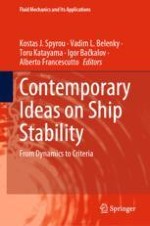This book is a selection of research papers presented in 5 consecutive International Ship Stability Workshops (ISSWs) managed by the STAB International Standing Committee in the period 2013–2019 (2013 Brest, 2014 Kuala Lumpur, 2016 Stockholm, 2017 Belgrade, 2019 Helsinki). ISSWs are a long-standing and authoritative series of international technical meetings in the field of stability of ships and ocean vehicles. The book is the fourth of a line of books started 20 years ago and having the main title “Contemporary Ideas on Ship Stability”. It focuses on the state-of-the-art ship stability criteria and covers topics such as ship dynamics in waves, roll damping, stability of damaged ships, model experiments, and effect of stability requirements on ship design and operation. This book helps the readers to understand the current state of the art in the field of ship stability and see how this comes into the development of modern criteria of ship design and operation.
